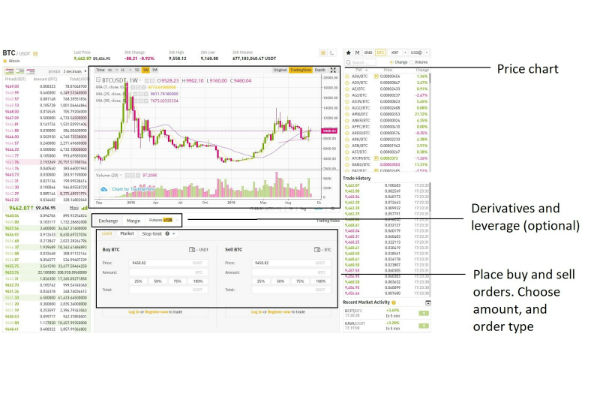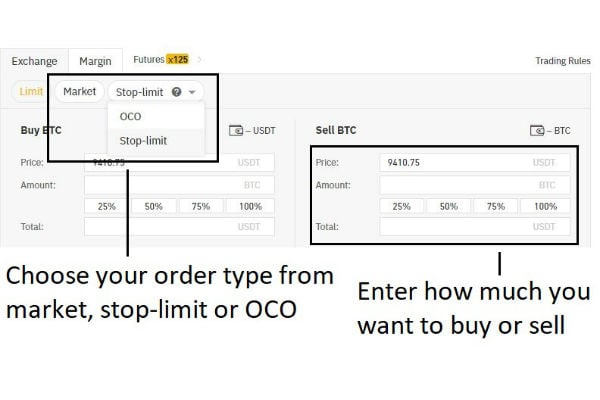
Estimated reading time: 2 min
Due to the potential for losses, the Financial Conduct Authority (FCA) considers this investment to be high risk.
What are the key risks?
1. You could lose all the money you invest
- The performance of most cryptoassets can be highly volatile, with their value dropping as quickly as it can rise. You should be prepared to lose all the money you invest in cryptoassets.
- The cryptoasset market is largely unregulated. There is a risk of losing money or any cryptoassets you purchase due to risks such as cyber-attacks, financial crime and firm failure.
2. You should not expect to be protected if something goes wrong
- The Financial Services Compensation Scheme (FSCS) doesn't protect this type of investment because it's not a 'specified investment' under the UK regulatory regime – in other words, this type of investment isn't recognised as the sort of investment that the FSCS can protect. Learn more by using the FSCS investment protection checker.
- The Financial Ombudsman Service (FOS) will not be able to consider complaints related to this firm or Protection from the Financial Ombudsman Service (FOS) does not cover poor investment performance. If you have a complaint against an FCA regulated firm, FOS may be able to consider it. Learn more about FOS protection here.
3. You may not be able to sell your investment when you want to
- There is no guarantee that investments in cryptoassets can be easily sold at any given time. The ability to sell a cryptoasset depends on various factors, including the supply and demand in the market at that time.
- Operational failings such as technology outages, cyber-attacks and comingling of funds could cause unwanted delay and you may be unable to sell your cryptoassets at the time you want.
4. Cryptoasset investments can be complex
- Investments in cryptoassets can be complex, making it difficult to understand the risks associated with the investment.
- You should do your own research before investing. If something sounds too good to be true, it probably is.
5. Don't put all your eggs in one basket
- Putting all your money into a single type of investment is risky. Spreading your money across different investments makes you less dependent on any one to do well.
- A good rule of thumb is not to invest more than 10% of your money in high-risk investments.
If you are interested in learning more about how to protect yourself, visit the FCA's website here.
For further information about cryptoassets, visit the FCA's website here.
There are lots of ways to make a profit (or lose money) by trading cryptocurrency.
This guide explains where to begin, including choosing a trading style, how to devise a trading plan, what to look for in a crypto trading platform and risks to consider.
How to trade crypto in the UK
There are 5 steps to getting started:
1. Do your research to work out whether cryptocurrency trading is right for you
Cryptocurrency is a notoriously volatile asset and active trading can result in substantial losses. Before getting started, it's essential you understand how any crypto you'd like to buy works. Reading guides, exploring the blockchain and observing moves made by experienced traders are good ways to see if crypto trading suits your investment goals.
Remember to never trade more than you can afford to lose and consider chatting to a professional financial advisor before you get started.
2. Decide whether you want to do long-term or short-term trading
Traders are typically divided up into 2 groups: long- and short-term. Both are very different.
Long-term trading
Long-term traders buy and hold cryptocurrencies for weeks, months or even years, with the intention of selling at a profit or using it later.
If you believe the value of a cryptocurrency will grow in the long run and don't want the stress of actively trading, then this might be your style. A good first step is learning how to safely buy and hold cryptocurrency.
Short-term trading

Short-term trading, or intraday trading , is about taking advantage of short-term cryptocurrency price swings by creating and executing a trading strategy.
It's more active, stressful and risky than long-term trading, but it also offers faster and larger potential returns for those who do it right. It also lets you profit from cryptocurrency prices dropping as well as rising.
3. Choose the trading method that's right for you
The next step is choosing a trading method. This is important because they are all quite different and require different techniques. In some cases, the same cryptocurrency exchange will offer several different types of trading.
There are 3 main ways of making short-term cryptocurrency trades.
A. Trade cryptocurrencies directly against each other
You can trade a pair of cryptos against each other or against fiat currency, with the goal of making a profit through buying low and selling high. This might mean buying a cryptocurrency before an important event (for example, Cardano adding smart contracts) and selling it into a stablecoin once the hype begins to wear off.
If you do it right, your funds grow. If you do it wrong, your funds shrink over time, as bad trades and changing markets can eat away at your holdings. The value of your crypto will rise and fall, but there's no risk of immediately losing all your money to a bad trade. This method requires timing the market accurately, which can be difficult and requires a lot of research.
- Good for: Avoiding excessive risks, keeping things simple.
- Not so good for: High-risk/high-reward strategies, profiting from markets dropping.
B. Trade cryptocurrency derivatives
You don't have to own any cryptocurrency to trade crypto derivatives. You can "bet" on the markets instead.
Derivatives trading offers much more flexibility than simply buying and selling cryptocurrencies, but it's also more complex and only suited to experienced traders. There are several types of derivatives, such as futures, options and perpetual swaps, all of which have their own nuances and can be used simultaneously.
Crypto derivatives trading often includes using leverage, which can substantially magnify gains and losses. Traders can also open short positions to directly profit from cryptocurrency price drops, mitigate their risks by hedging and make big trades even if the markets are relatively quiet. Derivatives can also be a very fast way of losing money.
- Good for: Leverage, large profits (or losses) even in flat markets, fast gains or losses, high-risk/high-reward strategies, flexibility in any market conditions.
- Not so good for: First-time cryptocurrency traders.
C. Trade cryptocurrency CFDs
Cryptocurrency CFDs (contracts for difference) are a specific type of derivative that lets you place bets on the price movement of an asset. Like other derivatives, they let traders go long (bet on price rises) and short (bet on price drops), and utilize leverage without owning the underlying asset.
Unlike other derivatives, CFDs don't involve buying and selling derivatives in an open market. Instead, you're just buying from and selling to whichever trading platform you're using. While most cryptocurrency derivatives treat crypto as a commodity of sorts, CFDs typically approach cryptocurrency similar to forex trading.
- Good for: Leverage, large profits (or losses) even in flat markets, fast gains or losses, people who are experienced with forex trading and want to try their hand at crypto.
- Not so good for: Beginners; due to the elevated risks, the potential for larger losses and all the additional tools and jargon you'll have to know.
4. Learn how to place trades and read charts
Before you start trading, you need to be sure cryptocurrency trading is right for your circumstances and that you understand the risks associated with it. You'll also need to know how to read technical graphs and how various order types work.
Here's an example from the Binance trading platform, showing the Bitcoin/USDT market with the important parts annotated.

The red and green box at the top is the price chart. At the bottom is where you place your buy and sell orders. Sandwiched between them is where you can click through to derivatives if this is offered in the UK. It's a completely separate market, where people trade futures contracts rather than Bitcoin itself.
Let's zoom in on the bottom section, where you place buy and sell orders. There are 2 things to pay attention to here: your order type and the amount you want to buy or sell.

In this case, Binance offers 3 basic order types: market, stop-limit and OCO.
- Market. Place a buy or sell order at the current market price to execute your trade immediately.
- Stop-limit. Once you select this, you will be prompted to choose a stop price and limit price. Once the asset (Bitcoin in this case) reaches the stop price, it will sell for at least the limit price if possible.
- OCO "One cancels the other." This is 2 stop-limit orders combined, where one cancels the other if it's triggered. You will need to set an active duration for both stop-limit and OCO orders.
Market and stop-limit are the basic order types you'll find on almost all exchanges, while OCO is a bit less common. Different exchanges will sometimes have additional order types or slightly different rules about how they can be placed.
5. Choose an exchange and start trading
When choosing a cryptocurrency trading platform, consider factors such as what kind of order types it allows, whether it offers derivatives or leverage and how easily it integrates with cryptocurrency trading bots. High-volume traders will also want to consider fees and how they may impact profit margins.
Finder Score for crypto exchanges
To make comparing even easier we came up with the Finder Score. Fees, features and asset-support across the most popular platforms are all weighted and scaled to produce a score out of 10. The higher the score the better the exchange – simple.
How to make a crypto trading plan
The difference between gambling and trading is having a plan. The most important part of creating a plan is ensuring it suits your specific trading goals. In general, a trading plan involves a 3-step process:
1. Look for patterns
The basic principle of reading charts and creating trading plans is to look for patterns in previous price movements and then use those to try and predict future movements.
Some patterns emerge frequently enough across multiple markets that they're given their own names, such as resistance and support. Others can be much more obscure and aren't given names of their own.
For example, if you think Bitcoin goes up when Ethereum goes down, or that Bitcoin rises when the US dollar falls relative to the Chinese renminbi, or anything else you can think of, that could be a pattern you can trade on.
While patterns can be very helpful for traders, it's worth remembering that past performance is not always a reliable indication of future performance.
2. Make a plan and stick to it
The following are the 2 basic components of a trading plan:
- A point where you take profits
- A point where you cut your losses
For example, someone's basic plan might be to sell 33% of their Bitcoin for every US$1,000 the price goes up (taking profits) or to immediately sell all their Bitcoin if prices drop below the current support line (cutting losses). To lay out this plan, they could set up a series of stop-limit orders.
This is not necessarily a good plan, but it would ensure that the amount they gain or lose is within sensible boundaries no matter what the market does.
As traders get more experienced, they can create increasingly sophisticated trading plans that tie together more market indicators and allow for much more nuanced trading strategies.
Experienced traders typically use cryptocurrency trading bots to execute their strategies because they tirelessly follow complex trading plans faster and more reliably than a human ever could.
3. Experiment
It's good to test trading theories before throwing real money at them. Paper trading or backtesting can be useful here. Both features are often found on trading platforms.
Paper trading is a way of using fake money on markets, so you can test a trading strategy in real, current conditions. Backtesting is when you put a trading strategy through historical market movements to see how it would have performed.
If you're a beginner trying to get your head around the basics of reading charts and spotting patterns, you may want to read the step-by-step guide to cryptocurrency technical analysis for a sense of how to start spotting patterns.
What to watch out for
Cryptocurrency trading incurs many of the risks of trading on any other market as well as some unique challenges.
- Volatility. Cryptocurrency is volatile. This is one of the things that makes it attractive to traders, but it also makes it very risky. Double-digit intra-day price swings are common, and drastic shifts can happen in just minutes.
- Unregulated, manipulated markets. The cryptocurrency markets are largely unregulated compared to more traditional markets. It's an open secret that wash trading and market manipulation are common. They're also a lot less liquid than many other markets, which can contribute to the volatility and make it easier for well-moneyed "whales" to manipulate prices, force liquidations and similar. Exchanges themselves are sometimes accused of manipulating their own markets against their own customers.
- Inaccurate patterns. Markets will often follow patterns, but often they won't. This is a risk when trading anything, but the unique characteristics of the cryptocurrency market mean it's a particular challenge there.
- Being over-exposed. Don't bet more than you can afford to lose. Limit your exposure and consider setting up "take profit" and "stop loss" orders to limit your exposure in the event of drastic swings.
- Using excessive leverage. Many cryptocurrency exchanges will offer up to 100x leverage, dramatically magnifying the potential risks. The volatility of cryptocurrency, combined with high leverage trading, can see positions be liquidated extremely quickly.
- Not knowing when to fold. Whether you're up or down, it's important to know when to close a position and either take profits or cut your losses.
Bottom line
Trading cryptocurrency can be a good way for experienced investors to make a profit. There are lots of different trading styles to choose from, so do your research to decide which one meets your personal investment goals first.
It's important to remember that trading crypto can be extremely risky. Crypto is a notoriously volatile asset, and even the most advanced traders can end up losing all of their capital on a few bad trades. Don't begin trading until you are confident in your understanding of the markets, have thoroughly researched the best cryptos to buy and are up to date with the latest crypto news. When in doubt, it's a good idea to consult a financial advisor.
Frequently asked questions
*Cryptocurrencies aren't regulated in the UK and there's no protection from the Financial Ombudsman or the Financial Services Compensation Scheme. Your capital is at risk. Capital gains tax on profits may apply.
Cryptocurrencies are speculative and investing in them involves significant risks - they're highly volatile, vulnerable to hacking and sensitive to secondary activity. The value of investments can fall as well as rise and you may get back less than you invested. Past performance is no guarantee of future results. This content shouldn't be interpreted as a recommendation to invest. Before you invest, you should get advice and decide whether the potential return outweighs the risks. Finder, or the author, may have holdings in the cryptocurrencies discussed.
Read more on Trading
-
How to do technical analysis and read the cryptocurrency market
There’s much to gain and lose in the volatile cryptocurrency market. If you want to make the best decisions, then you need to understand how to do a technical analysis. This guide from finder will tell you everything you need to know.
